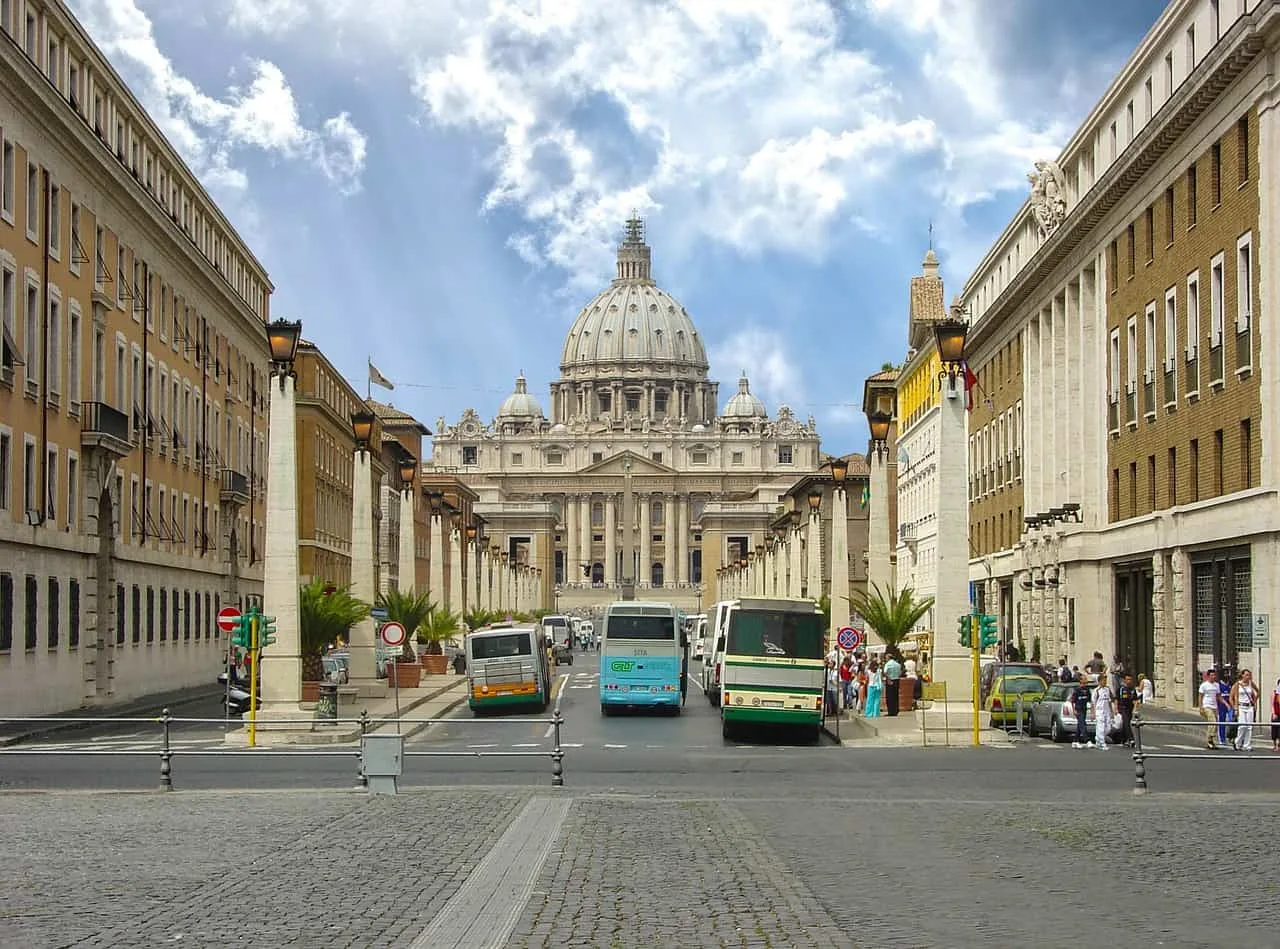One of the most fascinating squares in the world is located right in front of one of the most amazing churches in the world as well.
In this post, you’ll discover the ultimate list of facts about St. Peter’s Square.
1. The square is located in Vatican City
St. Peter’s Square, in Italian known as “Piazza San Pietro,” is a large monumental square in front of the largest Christian church in the world, St. Peter’s Basilica. The square and church are located within Vatican City, the small papal enclave in the center of Rome.
Both the square and the church were dedicated to Saint Peter, the main Apostle of Jesus Christ who, according to Christian belief, was crucified in the area of the square during the Christian purge of infamous Roman Emperor Nero.
The square is situated directly to the west of the Roman neighborhood of Borgo on the west bank of the Tiber. This is about 1 kilometer (0.6 miles) to the northwest of the Roman Forum, the central marketplace of Ancient Rome, and the city’s most famous landmark, the Roman Colosseum.
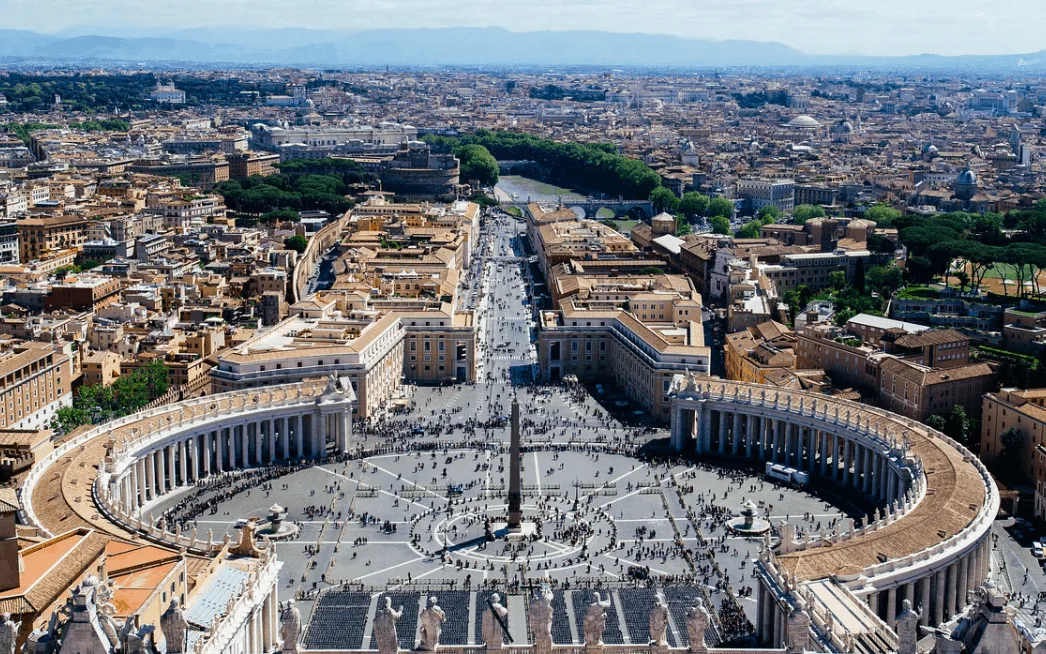
2. The square was designed by a renowned Baroque artist
The Basilica was built to replace the old church in its location in the early 16th century. The cornerstone of the massive structure was laid in 1506 and it took nearly 120 years to complete it, something that finally happened on November 18, 1620.
The iconic square in front of the church was designed by one of the most famous Baroque artists in history named Gian Lorenzo Bernini. He did so under the command of Pope Alexander VII.
The construction of the square happened between 1656 and 1667.
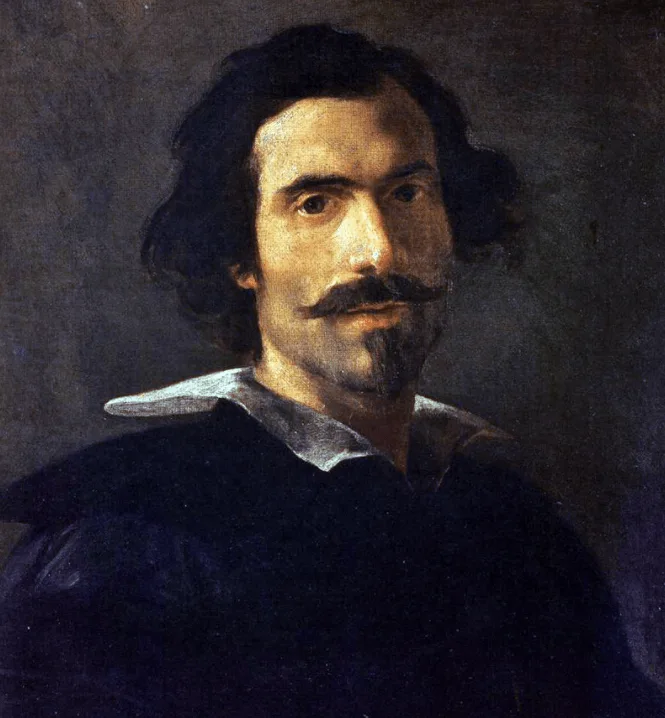
3. The architect also completed multiple works inside the Basilica
To say that Bernini was one of the most renowned artists of his time is an understatement. By the time that Pope Alexander VII commissioned the square, he was already working on the interior of the Basilica for multiple decades.

Some of his most notable works include a bust and equestrian statue of King Louis XIV located at the Palace of Versailles, the Tomb of Pope Alexander VII inside St. Peter’s Basilica, as well as the Throne of Saint Peter inside the church.

4. The massive rows of colonnades are 4 levels deep
The most prominent feature of the square is the rows of colonnades which give the square an elliptical shape. One of the most fascinating facts about St. Peter’s Square is that these rows of columns are 4 levels deep.
They were built on a colossal scale and are remarkably simple in design, using a simplified version of the Doric order. This was done on purpose in order not to compete with the elaborately decorated columns of the Basilica.
The square is occupied by a total of 248 columns and 88 pilasters, while 140 over-life-sized saints decorate its cornice.
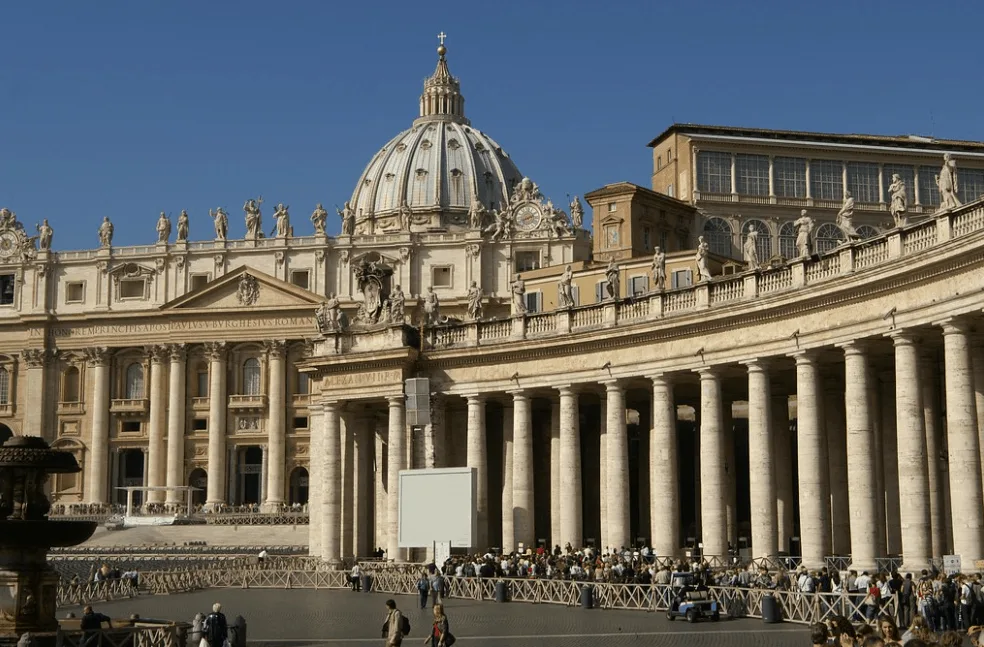
5. The elliptical center of the square has a deeper meaning
Building the huge elliptical square wasn’t easy considering a large number of structures stood in their way back in the 17th century.
The buildings on its left all had to be removed and the papal apartments on the right had to be masked to create a uniform ensemble which was described by Bernini as “embracing visitors in the maternal arms of Mother Church.”
As you can see from an illustration below, which dates back to 1587 when the Basilica’s façade was not yet completed, the left part of the square was occupied by a row of buildings.
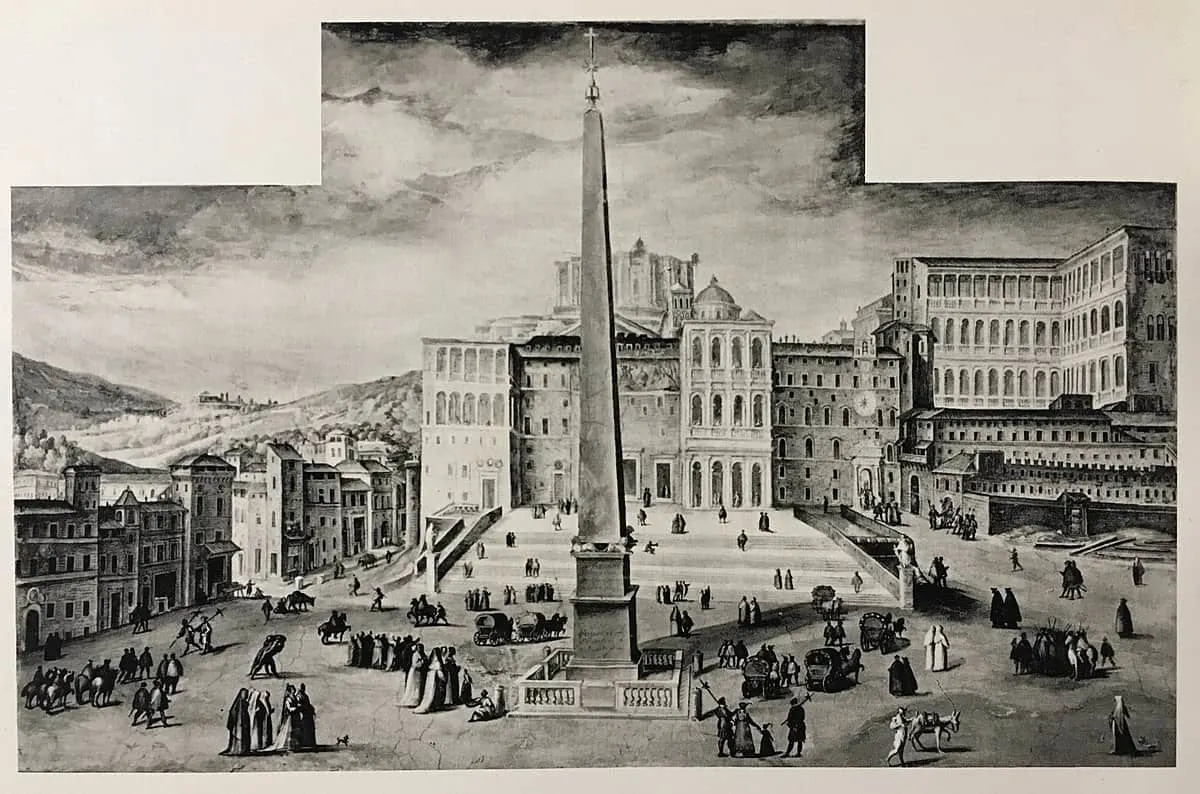
6. The shape of the square creates an illusion at the Basilica’s entrance
The piazza in front of the basilica has a trapezoidal shape, but this wasn’t done on purpose. It was the only option for Bernini because of a lack of space.
The result of this is magnificent though because for visitors leaving the church this creates a heightened perspective, something which has often been described as a “masterpiece of Baroque Theater.”
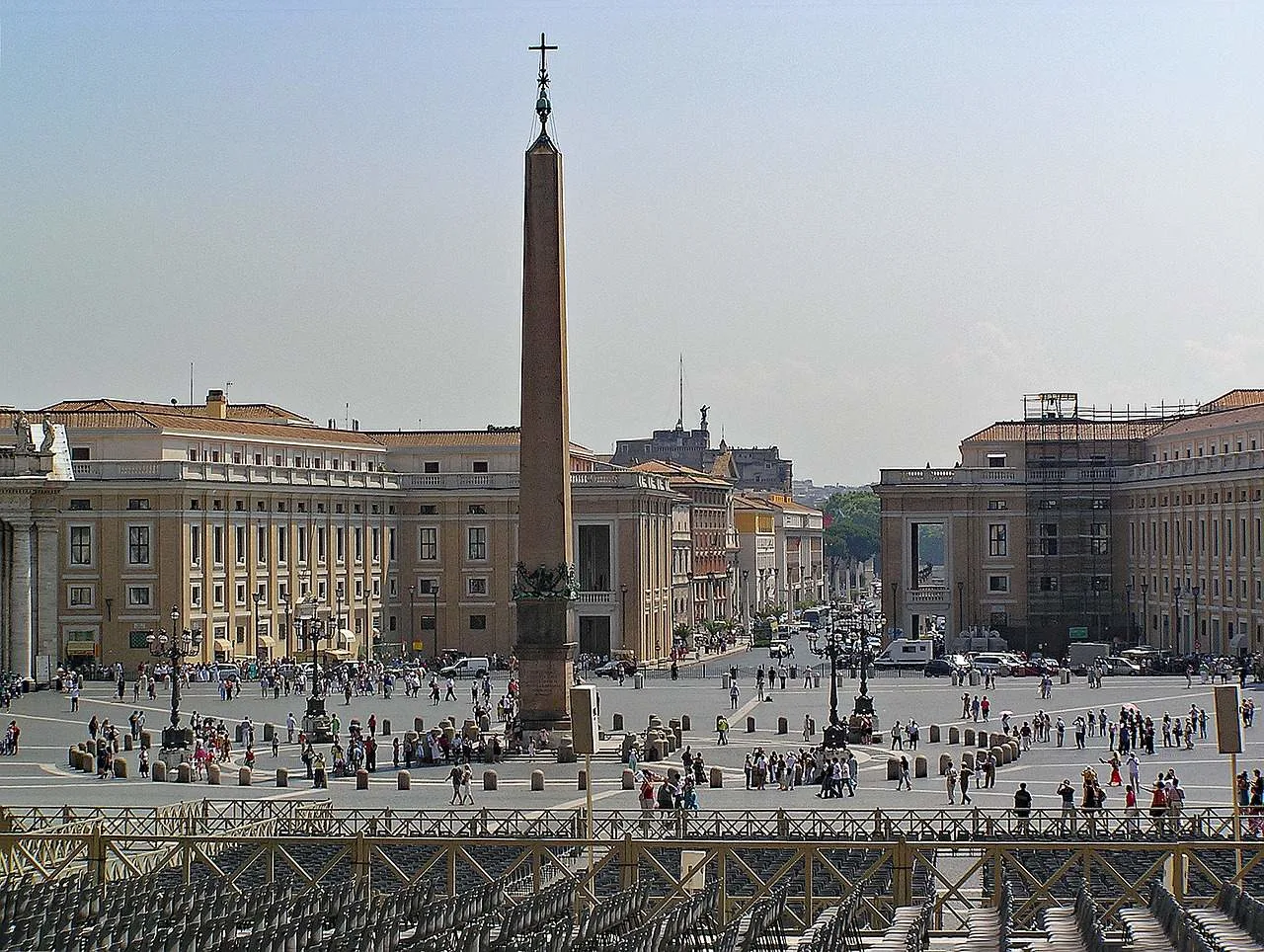
7. The massive obelisk used to decorate a city in Ancient Egypt
The square was built around the massive obelisk that decorates it in the center. This Ancient Egyptian obelisk used to decorate a city in Ancient Egypt called Heliopolis, now part of the northern outskirts of Cairo.
This massive red granite structure stands 25.5 meters (84 feet) tall and reaches a total height of 41 meters (135 feet) including the cross on its top.
It’s supported by decorative lions and decorated with the Chigi arms on top, in honor of Pope Alexander VII who commissioned the construction of the square.
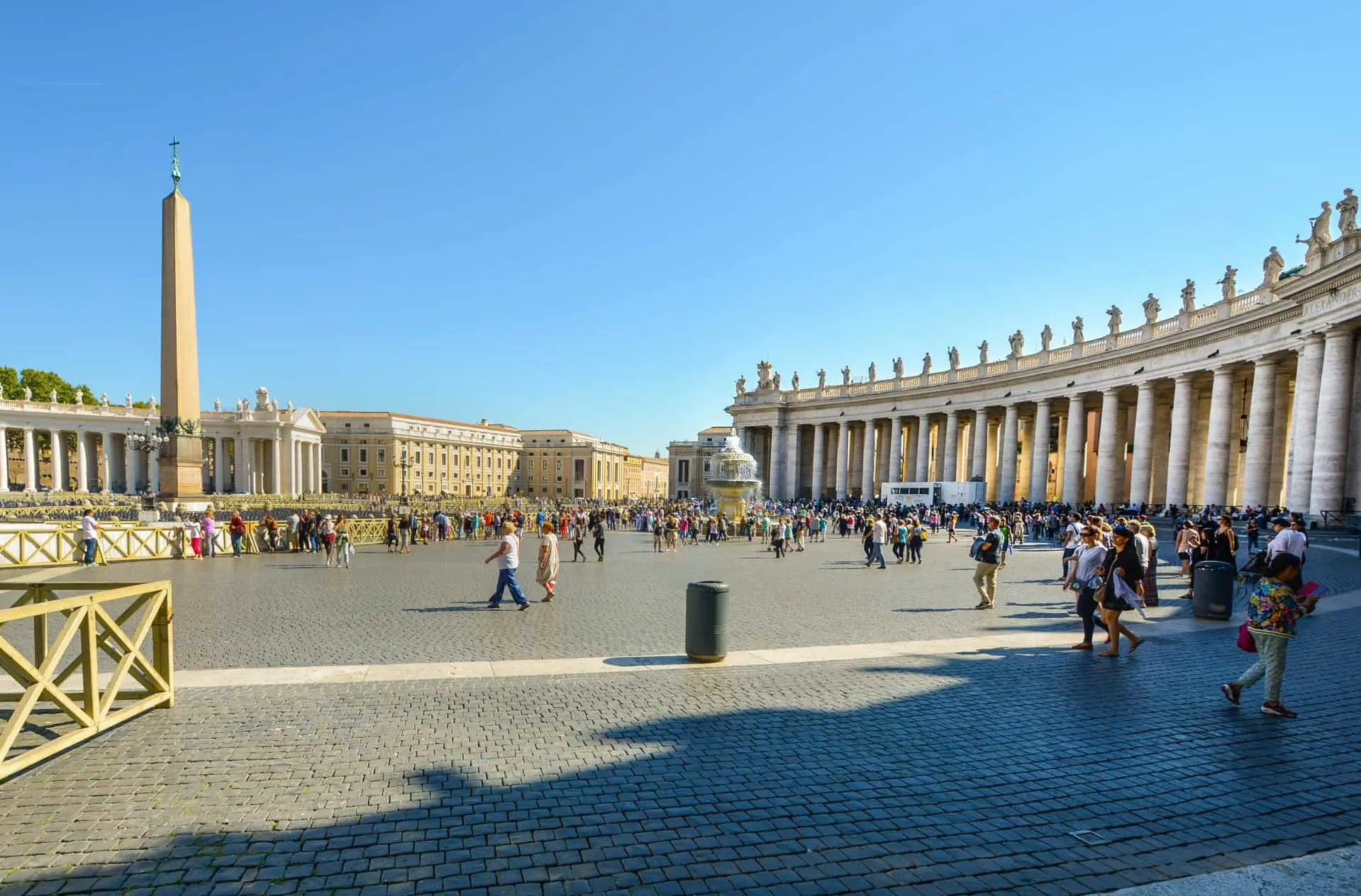
8. Only one of its counterparts still stands in a district in Cairo
The obelisk that currently decorates the center of St. Peter’s Square is one of many Ancient Egyptian that as brought to Rome. This one was originally moved to the Julian Forum of Alexandria in northern Egypt by Emperor Augustus.
It stood here until the year 37 A.D., which is the year that another infamous Roman Emperor named Caligula, took over. He ordered the Julian Forum to be destroyed and had the obelisk sent to Rome to decorate a massive new circus.
This Roman entertainment facility was initially referred to as the Circus of Caligula but later called the Circus of Nero. It was situated in the area the square was built over 1,600 years later.
One such obelisk which dates back to Senusret I of Dynasty XII, a pharaoh who ruled between 1971 and 1926 B.C., is all that remains in the Ancient Egyptian city of Heliopolis. The area is now part of Ayn Shams, a northeastern suburb of Cairo.
It stands 21 meters (69 feet) tall and weighs a whopping 120 tonnes (240,000 lbs)!
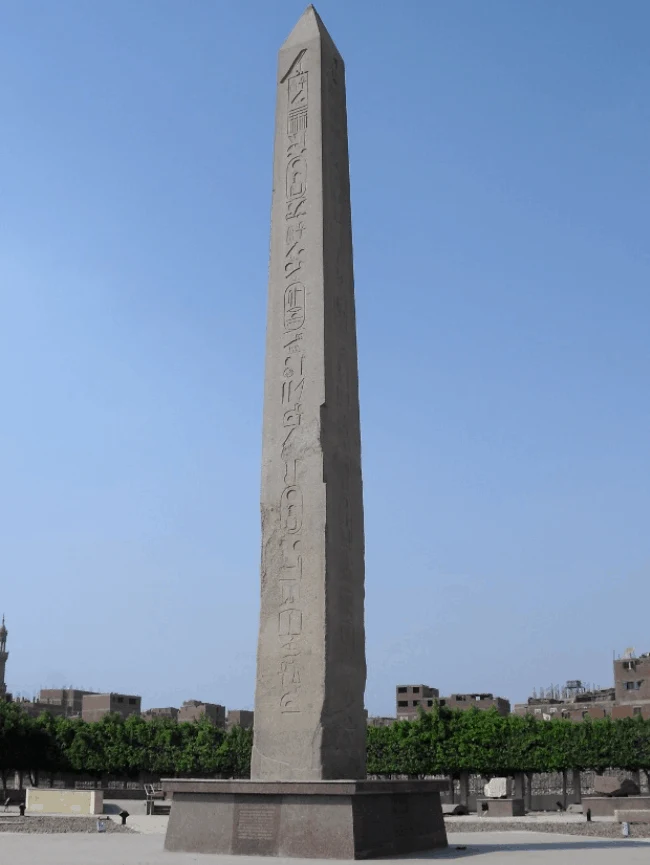
9. The obelisk is the centerpiece of the square for a good reason
Ever since the massive obelisk was put into position during the reign of Emperor Caligula (37-41 A.D.), it stood in a location just left of the old Basilica. It was only in the year 1587 that it was moved in front of it to its current location.
One of the most remarkable facts about St. Peter’s Square is that it contains the only obelisk in Rome that hasn’t been toppled since Ancient times, a good enough reason to make it the centerpiece of one of the most amazing squares in the world!
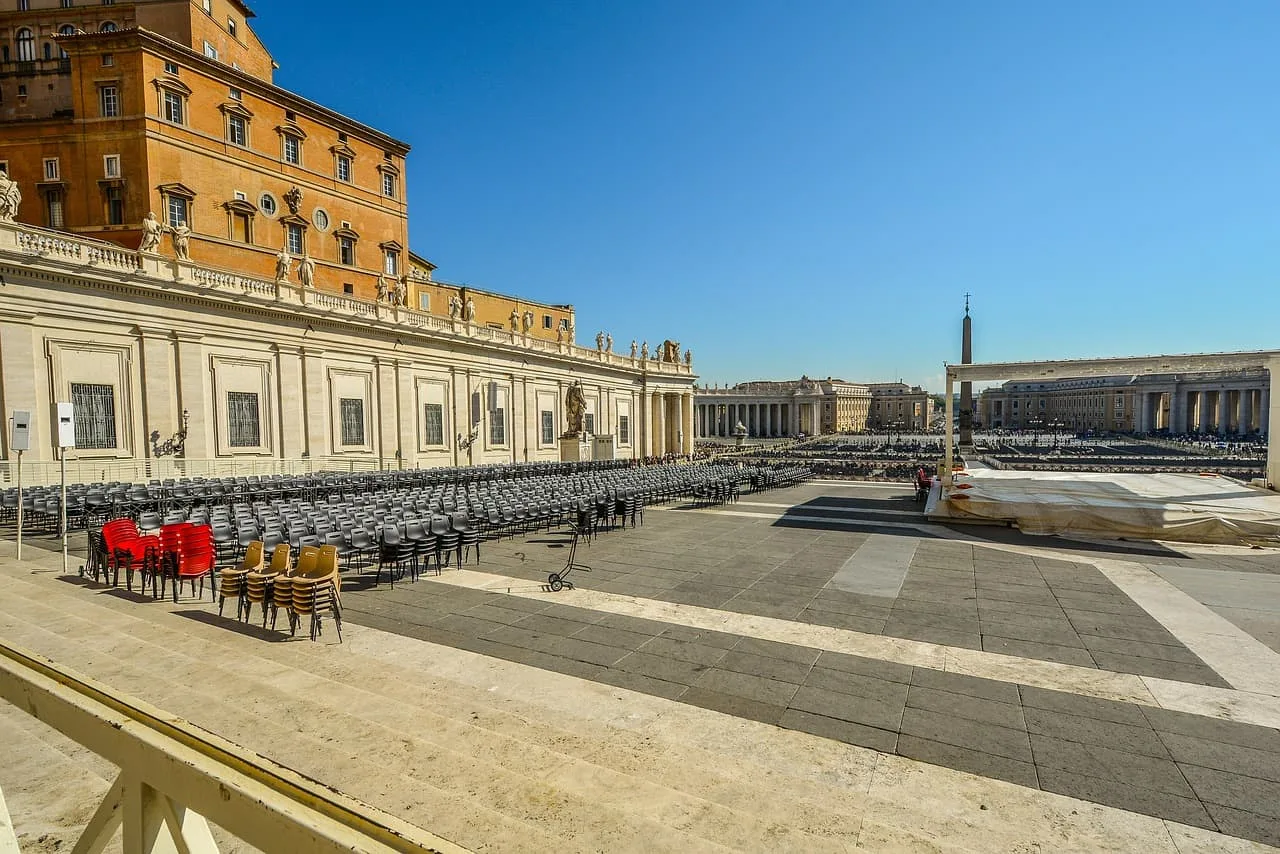
10. The centerpiece of the square has a remarkable practical function as well
Back in the year 1817, circular stones were added around the obelisk. This was done in such a way that its shadow marks where the sun enters each of the signs of the zodiac at noon.
This way, the obelisk is used as a massive sundial’s gnomon, giving it a practical function as well!

11. Travertine was added to the pavement as a decorative feature
The square is decorated with 2 granite fountains that form the axis of the square. One of these was already in place in 1613 and was designed by another artist named Carlo Maderno, the man who designed the façade of the Basilica.
Bernini balanced the square with a similar fountain on the other side in 1675, along with lines of travertine to decorate the square which is covered with cobblestones, also referred to as “Belgian Blocks.”
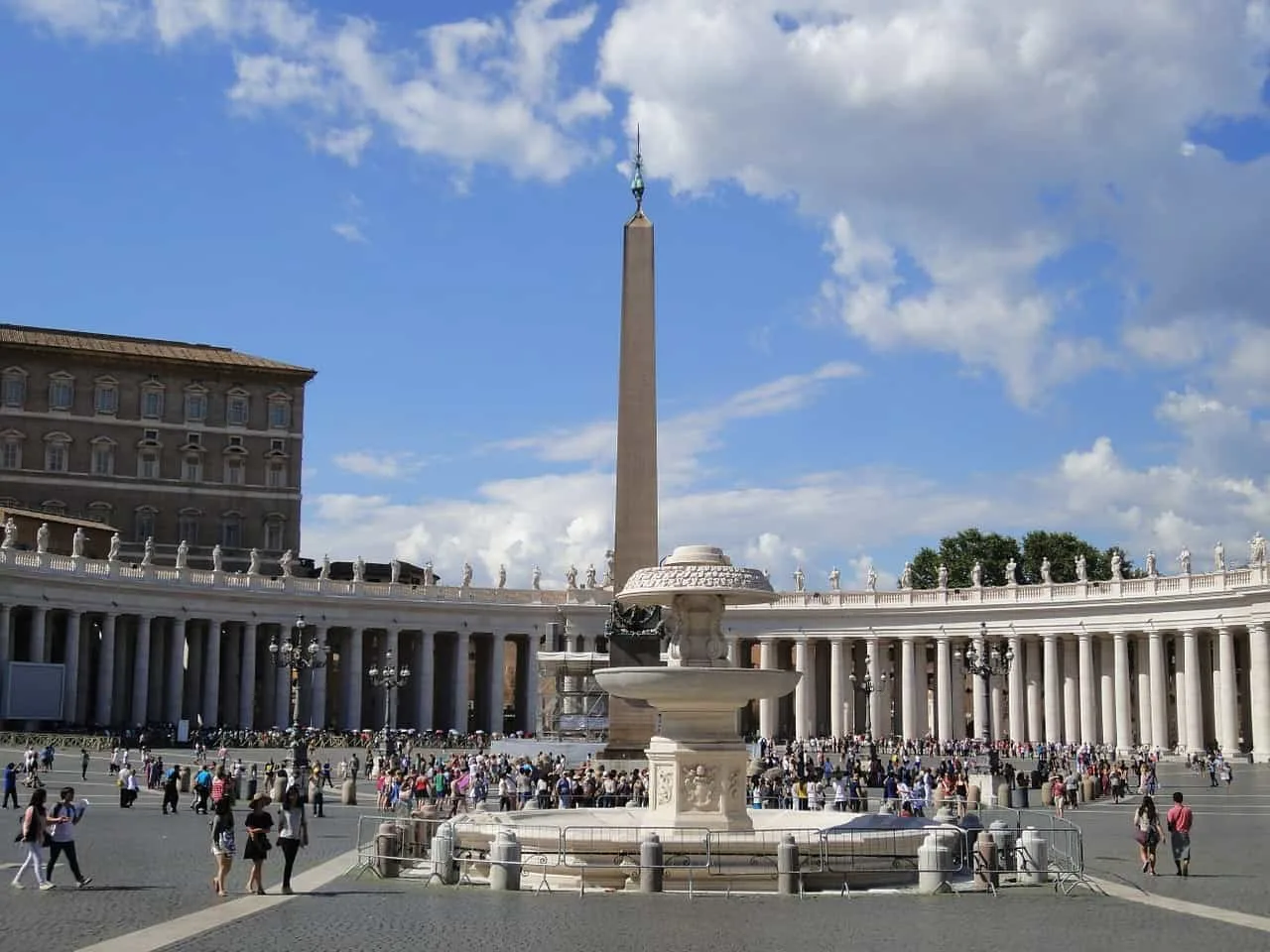
12. Many historic buildings were destroyed to build the grand approach
The main road leading towards the Square and Basilica is called the “Via della Conciliazione.” It’s about 500 meters (1,600 feet) long and leads here directly from the Castel Sant’Angelo.
The construction of this road wasn’t without contest, mainly because a lot of historic buildings had to be destroyed. Many Medieval and Renaissance buildings have been rebuilt in other locations such as the Palazzo dei Convertendi and the Church of the Nunziatina. Some have been permanently destroyed and lost to history.
The construction of this road, which is not the grandiose approach to St. Peter’s Basilica and Square, was commissioned by Italian dictator Benito Mussolini and took place between 1936 and 1950.
